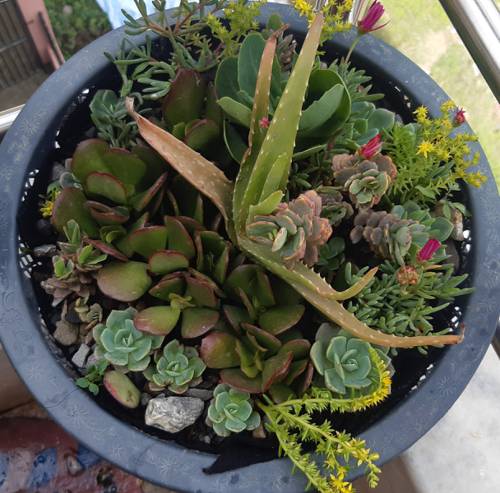
FAQ About Indoor Plant Osmoregulation

What is osmoregulation in indoor plants?
Osmoregulation in indoor plants refers to the process by which plants maintain the balance of water and solutes within their cells. This involves regulating water uptake, retention, and loss to support cellular functions and overall plant health. Proper osmoregulation helps plants adapt to varying environmental conditions, such as changes in humidity, temperature, and light.

Why is osmoregulation important for indoor plants?
Osmoregulation is crucial for indoor plants because it helps them manage water stress, maintain cell turgor pressure for structural support, and ensure optimal metabolic processes. This regulation is essential for the plant's growth, nutrient absorption, and adaptation to indoor environmental changes.

How do indoor plants achieve osmoregulation?
Indoor plants achieve osmoregulation through several mechanisms, including opening and closing stomata to regulate transpiration, adjusting root water uptake, utilizing osmoprotectants like proline and sugars, and altering cellular solute concentrations. These processes help stabilize the plant's internal environment and manage water efficiently.

What role do stomata play in osmoregulation of indoor plants?
Stomata are tiny openings on the leaves of plants that regulate gas exchange and water loss. In osmoregulation, stomata help control the amount of water vapor that escapes from the plant, thus managing water retention. By opening and closing, stomata balance the plant's need to cool itself and exchange gases while minimizing water loss.

How can I support osmoregulation in my indoor plants?
To support osmoregulation in your indoor plants, ensure they are kept in appropriate environmental conditions. This includes providing adequate water without overwatering, maintaining proper humidity levels, and placing plants in optimal lighting. Additionally, using well-draining soil and ensuring pots have good drainage can help avoid waterlogged conditions that disrupt osmoregulation.

What are the signs of poor osmoregulation in indoor plants?
Signs of poor osmoregulation in indoor plants include wilting, leaf drop, browning or yellowing of leaves, and stunted growth. These symptoms often result from inadequate water management, such as overwatering or underwatering, and reflect the plant's struggle to maintain its internal water balance.

Can lighting affect osmoregulation in indoor plants?
Yes, lighting can significantly affect osmoregulation in indoor plants. Light influences transpiration rates, as higher light levels can increase the temperature and cause stomata to open, leading to more water loss. Providing the right amount of light helps maintain a balance in water regulation and supports the plant's overall health.

How does soil composition impact osmoregulation in plants?
Soil composition plays a critical role in osmoregulation by affecting water retention and drainage. Well-aerated, nutrient-rich soil with good drainage helps plants efficiently absorb and manage water. Conversely, compacted or overly wet soil can hinder root water uptake and disrupt the plant's water balance.

Are there specific indoor plants that are better at osmoregulation?
Certain indoor plants, like succulents and cacti, are adapted to efficiently manage water through osmoregulation due to their natural habitats' dry conditions. Other plants like pothos and snake plants are also known for their resilience and ability to regulate water effectively in indoor environments.

How does temperature influence osmoregulation in indoor plants?
Temperature influences osmoregulation by affecting evaporation rates and water movement within plants. High temperatures can increase transpiration, potentially leading to water stress if not balanced with adequate water supply. Conversely, cooler temperatures may reduce water uptake and can also stress the plant if not properly managed.

What are osmoprotectants and their function in osmoregulation?
Osmoprotectants, such as proline, sugars, and glycine betaine, are compounds that help plants manage osmoregulation. They stabilize proteins and cell membranes, protect against osmotic stress, and assist in maintaining turgor pressure, thereby supporting plant health under varying conditions.

Is humidity important for osmoregulation in indoor plants?
Humidity is a vital factor in osmoregulation. It influences the rate of water loss through transpiration. In high humidity, transpiration decreases, reducing water loss, whereas in low humidity, transpiration increases, potentially leading to dehydration if the plant can't compensate with water uptake.

Can overwatering affect osmoregulation in indoor plants?
Yes, overwatering can disrupt osmoregulation by waterlogging the soil, which limits oxygen to the roots and hinders their ability to absorb nutrients and water efficiently. This can lead to root rot and other issues, negatively impacting the plant's health and its ability to regulate water.

How does root health influence osmoregulation?
Healthy roots are essential for efficient water and nutrient uptake, directly influencing osmoregulation. Damaged or diseased roots can impair the plant's ability to absorb water, disrupt the internal water balance, and lead to symptoms like wilting or nutrient deficiencies.

Are there ways to measure osmoregulation effectiveness in plants?
Osmoregulation effectiveness in plants isn't directly measured, but indicators include observing plant health and growth, checking soil moisture levels, and monitoring environmental conditions like humidity and temperature. Consistent good health and growth typically suggest effective water regulation.

Do indoor plants use osmoregulation differently than outdoor plants?
While the fundamental processes of osmoregulation are similar, indoor plants might face different challenges than outdoor plants, such as lower light levels, fluctuating temperatures, and less natural airflow. Indoor plants may require more careful management of water, light, and humidity to maintain optimal osmoregulation.

What environmental factors can disrupt osmoregulation in indoor plants?
Environmental factors that can disrupt osmoregulation include improper watering (either too much or too little), low humidity, incorrect lighting conditions, poor soil drainage, and extreme temperatures. Properly maintaining these factors is key to supporting healthy osmoregulation in indoor plants.

Can nutrient deficiencies affect osmoregulation in indoor plants?
Yes, nutrient deficiencies can affect osmoregulation. Nutrients like potassium play a crucial role in stomatal functioning and water regulation. A lack of essential nutrients can impair these processes, leading to inefficient water use and potential plant stress.

How does container size affect osmoregulation in indoor plants?
Container size affects osmoregulation by influencing the volume of soil and water the plant has access to. Small containers can limit root growth and water availability, leading to quicker drying of the soil, while excessively large containers might retain excess moisture, hampering osmoregulation. Choosing an appropriate container size is important for maintaining plant health.

How can I improve the water regulation ability of my indoor plants during winter?
During winter, indoor plants may require less water due to slower growth rates and lower light levels. To improve water regulation, reduce watering frequency, ensure adequate humidity to counteract dry indoor air, and ensure plants are not near drafts or heating sources. Adjust lighting as necessary to provide ample energy for osmoregulation.
